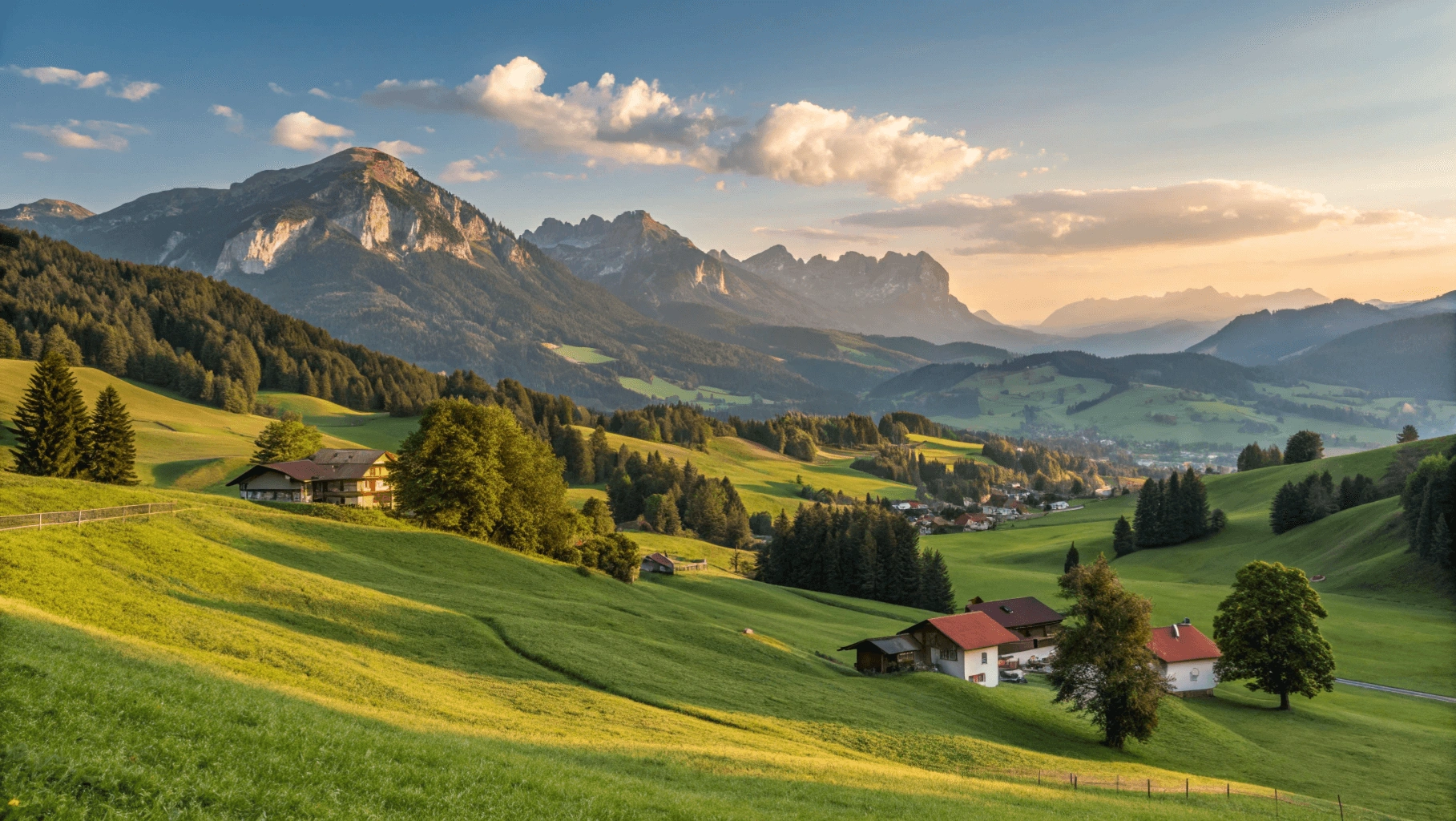Introduction: A Natural Wonder in the Heart of Switzerland
Nestled in the foothills of the Swiss Alps, the UNESCO Biosphäre Entlebuch stands as a testament to Switzerland’s commitment to preserving its natural heritage. This extraordinary region, spanning 395 square kilometers in the canton of Lucerne, received its UNESCO designation in 2001, To learn more about UNESCO’s global network of biosphere reserves and their mission, visit , becoming Switzerland’s first UNESCO Biosphere Reserve. What makes Entlebuch truly special is its remarkable diversity of landscapes – from pristine moorlands and rugged karst formations to lush alpine meadows and dense forests – all existing in harmony with the communities that have called this region home for centuries.
The UNESCO Biosphäre Entlebuch isn’t just a protected area; it represents a living laboratory where sustainable development and conservation work hand in hand. Unlike strictly protected national parks, biosphere reserves embrace human activities as part of the ecosystem, seeking to balance environmental protection with economic and social development. This unique approach allows visitors to experience authentic Swiss rural life while exploring some of the country’s most spectacular natural landscapes.
Table of Contents
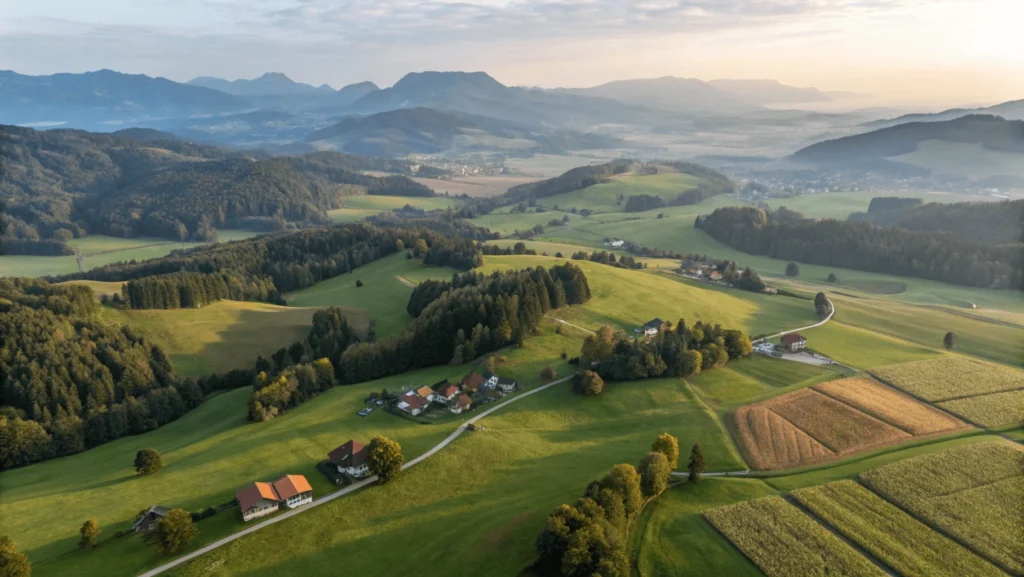
What Makes it a UNESCO Biosphere?
The UNESCO designation isn’t awarded lightly – it recognizes areas of exceptional ecological significance where innovative approaches to sustainable development are being implemented. In the case of Entlebuch, its designation celebrates the region’s remarkable moorlands, which are among the most valuable and diverse in Europe.
The Three-Zone Concept
Like all UNESCO biosphere reserves, Entlebuch follows the three-zone model:
- Core Zone: Covering about 8% of the reserve, these strictly protected areas include the precious moorlands and karst landscapes that represent the region’s most ecologically valuable habitats. Human intervention is minimal here, focused primarily on scientific research and carefully managed conservation efforts.
- Buffer Zone: Surrounding the core areas, these zones (about 42% of the reserve) allow for ecologically sound activities like traditional alpine farming, sustainable forestry, and low-impact tourism. They serve as protective buffers for the core zones while supporting traditional land use practices.
- Transition Zone: Making up the remaining 50%, these areas include villages, farms, and commercial zones where sustainable economic development is encouraged. Here, communities work to develop environmentally friendly businesses, from tourism to local food production.
Natural and Cultural Significance
What truly sets the UNESCO Biosphäre Entlebuch apart is its remarkable concentration of moorlands – raised bogs, transitional moors, and fenlands – which have developed over thousands of years. These unique ecosystems harbor extraordinary biodiversity, including rare plant species like sundews and cottongrass, along with specialized fauna adapted to these wetland environments.
The karst landscapes of Entlebuch, with their distinctive limestone formations, underground rivers, and caves, add another dimension to the region’s geological significance. These formations tell the story of millions of years of geological processes and provide important habitats for specialized plant and animal communities.
Culturally, Entlebuch preserves traditional Swiss alpine farming practices that have shaped mountain landscapes for centuries. The region’s distinctive architecture, crafts, cheese-making traditions, and seasonal festivals reflect a heritage deeply connected to the land.
Key Regions & Villages
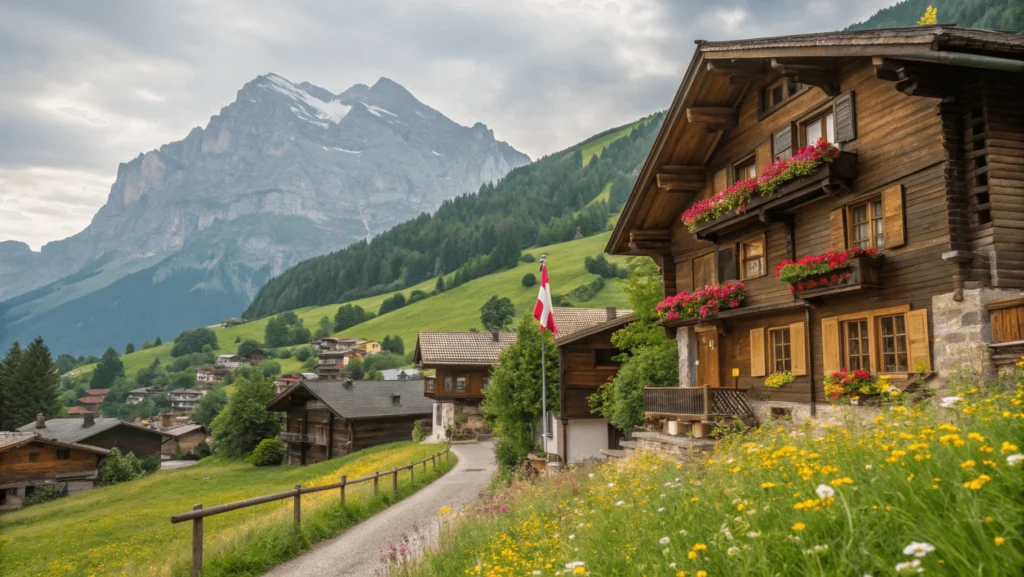
The UNESCO Biosphäre Entlebuch encompasses eight municipalities, each with its own character and attractions:
Sörenberg
This idyllic mountain village serves as the gateway to some of Entlebuch’s most spectacular moorlands. A popular destination for both summer hiking and winter sports, Sörenberg offers panoramic views of the UNESCO Biosphere’s diverse landscapes. The village sits at the foot of the Brienzer Rothorn mountain (2,350m), providing easy access to high-altitude trails and viewpoints.
Flühli
Known for its glass-blowing heritage and pristine natural surroundings, Flühli charms visitors with its traditional wooden architecture and rural atmosphere. The village is home to the last remaining glass factory in Switzerland that still uses traditional methods, offering a glimpse into this centuries-old craft.
Schüpfheim
As the administrative center of the Entlebuch district, Schüpfheim blends small-town charm with practical amenities. The Entlebuch Biosphere Center is located here, making it an excellent starting point for exploring the reserve. Its well-preserved old town features traditional Lucerne-style architecture.
Marbach
This picturesque village in the upper Entlebuch valley is characterized by its beautiful alpine meadows and traditional farmhouses. Marbach exemplifies the harmonious relationship between human settlements and the natural environment that defines the UNESCO Biosphere concept.
Escholzmatt-Marbach
This municipality encompasses numerous small settlements scattered throughout a landscape of rolling hills and meadows. The area is known for its agricultural traditions and local food specialties, particularly its mountain cheeses.
Entlebuch
The namesake village of the entire region offers a quintessential Swiss rural experience with its well-preserved historic center and surrounding pastures. The village sits along the Kleine Emme river, which has shaped the valley’s geography and culture.
Hasle
Characterized by its scattered settlements and farming communities, Hasle preserves traditional alpine agricultural practices. The municipality includes several important moorland areas that form part of the biosphere’s core zones.
Doppleschwand
The smallest municipality in the biosphere, Doppleschwand charms visitors with its tranquil atmosphere and beautiful landscapes. It represents the transition between the Entlebuch highlands and the lower regions of Canton Lucerne.
Must-See Natural Highlights
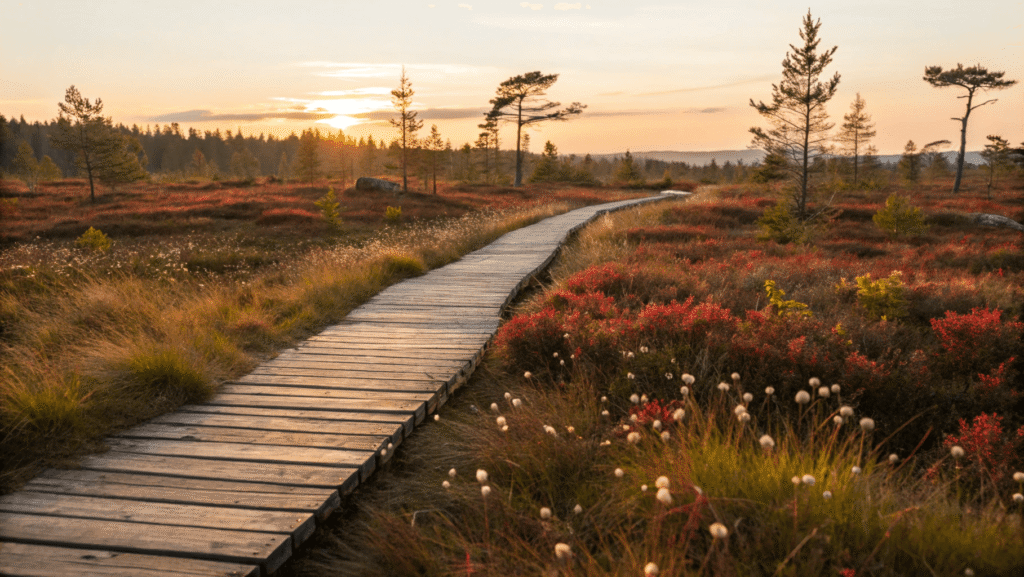
Moorlands (Moore)
The moorlands of Entlebuch represent the crown jewels of this UNESCO Biosphere. These distinctive wetland ecosystems, formed over thousands of years, are among the most pristine and extensive in Central Europe.
The Glaubenberg moorlands near Sörenberg offer some of the most accessible and impressive moorland experiences. Here, wooden boardwalks allow visitors to venture into these delicate ecosystems without causing damage. During summer, the moorlands burst into color with rare plant species including carnivorous sundews, vibrant orchids, and fluffy cottongrass.
Salwideli High Moor is another remarkable site, offering a textbook example of a raised bog ecosystem. The area features educational trails that explain the ecological importance of these habitats and their role in carbon sequestration and water regulation.
At Habkern Moor, visitors can observe the gradual transition from fenland to raised bog, illustrating the natural succession that occurs in these environments over centuries.
Karst Mountains (Karstgebiete)
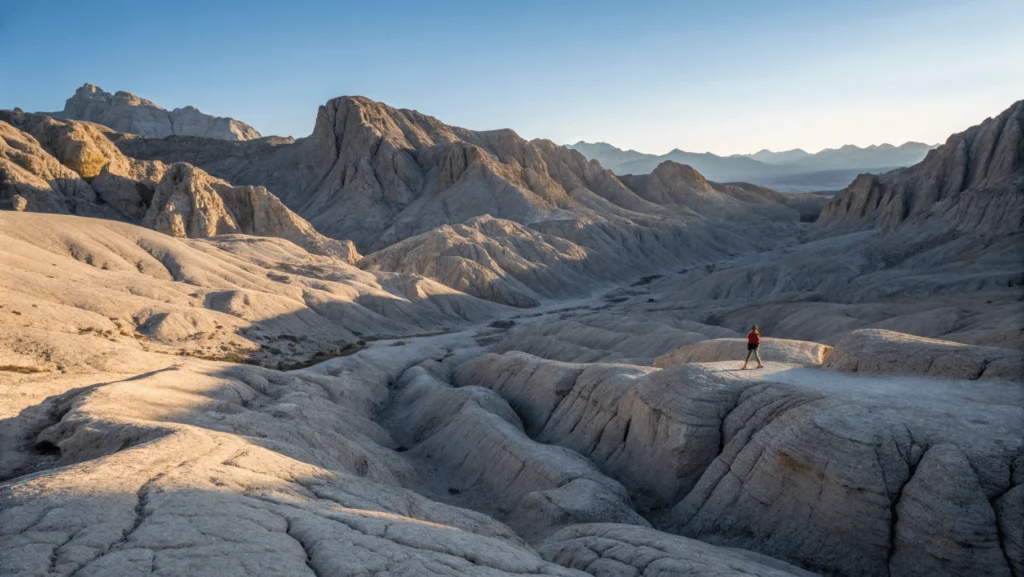
The limestone landscapes of Entlebuch have been sculpted by water over millions of years, creating a distinctive karst topography of rugged peaks, sinkholes, underground streams, and caves.
The Schrattenfluh mountain range presents Switzerland’s most impressive karst landscape. Its deeply furrowed limestone surface creates a lunar-like appearance, with rock formations called “lapiés” or “karren” forming intricate patterns across the mountainside. The area offers challenging hiking routes for experienced trekkers and rewards visitors with spectacular views across the biosphere.
Ahorn Karst Region features impressive sinkholes where streams disappear underground, feeding a complex network of caves and subterranean waterways. The interplay between surface and underground hydrology is particularly evident here.
Rivers & Waterfalls (Flüsse & Wasserfälle)

The Entlebuch landscape is carved by numerous rivers and streams that originate in its highlands and flow through valleys, creating scenic waterfalls and gorges along the way.
The Kleine Emme River serves as the main watercourse of the region, meandering through the Entlebuch Valley and creating diverse riparian habitats. Several hiking trails follow its course, offering pleasant walks along its banks.
Chessiloch Waterfall near Flühli drops dramatically through a narrow gorge, creating an impressive natural spectacle, especially after heavy rains or during the spring snowmelt.
The Waldemme River in the upper Entlebuch Valley features several picturesque cascades as it flows through forested gorges.
Flora & Fauna

The diverse habitats of the UNESCO Biosphäre Entlebuch support an exceptional variety of plant and animal species, many of which are rare or endangered.
In the moorlands, visitors might spot specialized plant species such as round-leaved sundew (Drosera rotundifolia), a carnivorous plant that captures insects on its sticky leaves, or the protected marsh gentian (Gentiana pneumonanthe) with its vibrant blue flowers.
The forests harbor populations of red deer, roe deer, and elusive lynx, which was successfully reintroduced to the region. Information about lynx reintroduction in Switzerland can be found via KORA, the large carnivore research group, Birdwatchers can observe black grouse, capercaillie, and numerous raptor species including the golden eagle.
In spring and summer, the alpine meadows transform into colorful carpets of wildflowers, including many species of orchids, gentians, and edelweiss.
Top Activities Overview
Hiking

The UNESCO Biosphäre Entlebuch offers over 300 kilometers of marked hiking trails catering to all ability levels:
- The Moorlandscape Trail near Sörenberg provides a fascinating introduction to the region’s bog ecosystems via wooden boardwalks.
- For more challenging terrain, the Schrattenfluh Ridge Trail rewards hikers with dramatic karst landscapes and panoramic views.
- The Seven Springs Trail connects natural springs throughout the region, each with its own distinct character and mineral composition.
- Family-friendly options include the Entlebuch Biosphere Trail, which features interactive stations explaining the region’s unique ecology.
Biking
Cycling enthusiasts can explore the biosphere on numerous designated routes:
- The Entlebuch Panorama Bike Route (Route 399) offers a 90-kilometer circuit through the entire region, showcasing its diverse landscapes.
- Mountain bikers can challenge themselves on the technical trails around Sörenberg or opt for more leisurely rides through the valleys.
- E-bike stations throughout the region make it easier to explore the hilly terrain, with rental and charging points available in most villages.
Themed Trails
Educational pathways provide deeper insights into the biosphere’s natural and cultural heritage:
- The Mooraculum in Sörenberg combines education with play, featuring interactive stations that explain moorland ecology in a family-friendly way.
- The Herb Trail showcases medicinal and culinary plants traditionally used in the region.
- The Climate Trail on Brienzer Rothorn illustrates the impacts of climate change on alpine environments.
Farm Visits
Experience authentic Swiss rural life through farm visits:
- Numerous Alpine Cheese Farms welcome visitors to observe traditional cheese-making processes and sample local specialties.
- Agrotourism experiences allow visitors to participate in farm activities, from milking cows to collecting herbs.
- Farm-to-table dining opportunities provide authentic culinary experiences featuring locally sourced ingredients.
Local Crafts
Discover traditional craftsmanship that has shaped the region for generations:
- The Glasi Hergiswil glassblowing workshop near Flühli showcases the region’s glass-making heritage.
- Woodcarving demonstrations in various villages display techniques passed down through generations.
- Local textile artisans create traditional patterns using natural dyes and fibers from the region.
Winter Sports
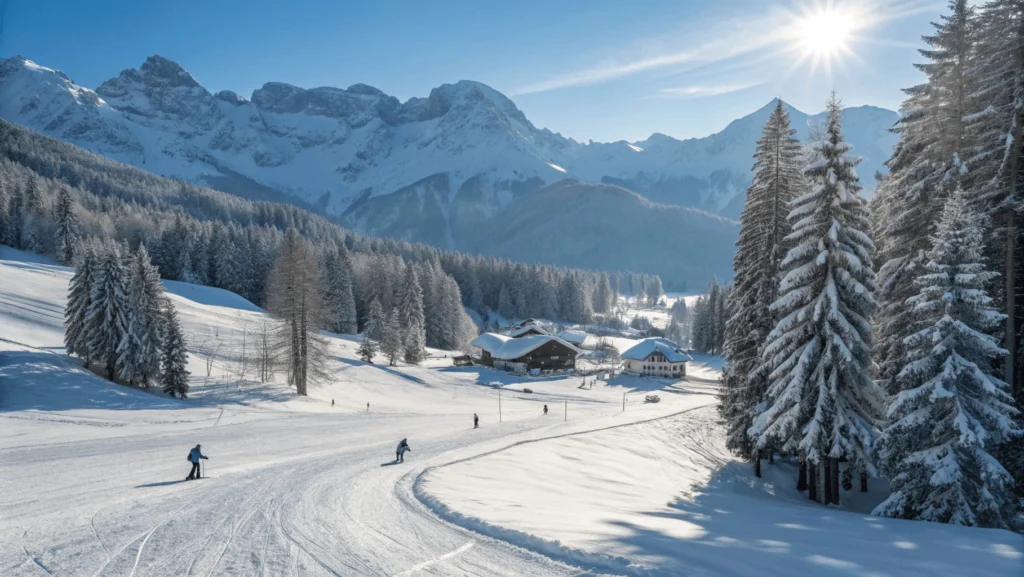
When snow blankets the landscape, the biosphere transforms into a winter wonderland:
- Skiing and snowboarding facilities in Sörenberg cater to all levels, with family-friendly slopes and more challenging terrain.
- Cross-country skiing trails wind through snow-covered moorlands, offering a peaceful way to experience winter landscapes.
- Snowshoe trails provide access to remote areas and pristine snow-covered scenery.
- Winter hiking paths are maintained throughout the season, allowing visitors to enjoy the crisp mountain air and stunning vistas.
Culinary Experiences
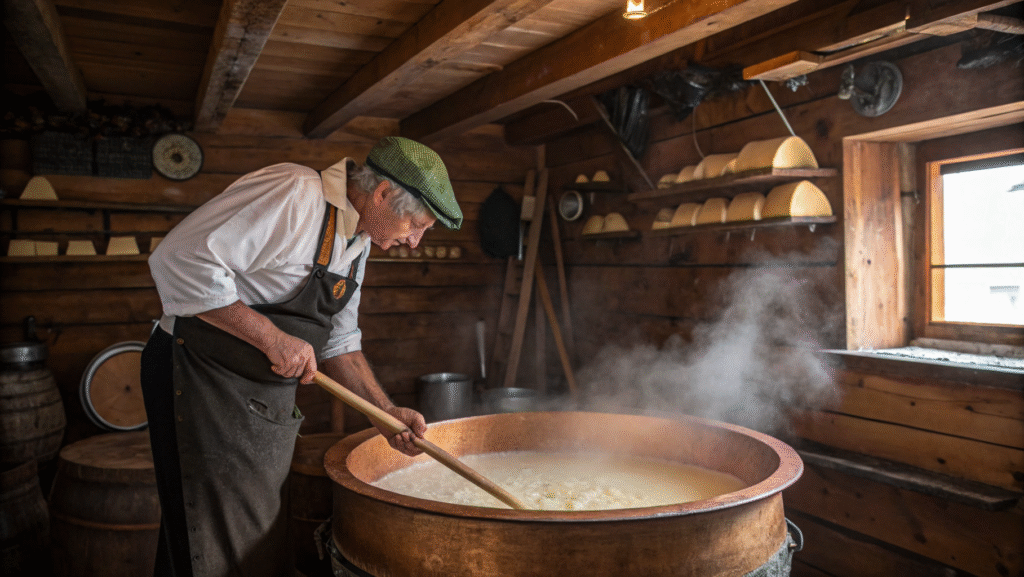
Taste the flavors of the biosphere through its local specialties:
- Entlebuch Mountain Cheese is made using traditional methods and milk from cows grazing on herb-rich alpine pastures.
- Seasonal wild foods including berries, mushrooms, and herbs feature prominently in local cuisine.
- Traditional bakeries offer regional specialties like Lebkuchen (gingerbread) and fruit breads.
- Distilleries and breweries produce spirits and beers using local ingredients, often incorporating herbs from the moorlands.
Planning Your Visit
Best Time to Visit
The UNESCO Biosphäre Entlebuch offers distinctive experiences throughout the year:
Spring (April-June): As the snow melts, alpine meadows burst into color with wildflowers. This is an ideal time for observing the awakening of nature and enjoying less crowded trails. Spring also brings flowing waterfalls at their most impressive volume.
Summer (July-August): Peak season offers the most reliable weather for hiking, biking, and exploring the moorlands. Summer also brings traditional alpine festivals and the opportunity to see farmers moving their cattle to high mountain pastures.
Autumn (September-October): Fall colors transform the landscape, creating a spectacular display as forests turn golden and red. Cooler temperatures make for excellent hiking conditions, and it’s mushroom season in the forests.
Winter (November-March): Snow transforms the biosphere into a winter wonderland. Sörenberg offers excellent skiing facilities, while snowshoe trails and winter hiking paths provide access to serene snowy landscapes.
Getting There
The UNESCO Biosphäre Entlebuch is easily accessible by public transportation, reflecting Switzerland’s excellent transit system:
By Train: The regional train line connects Lucerne to Entlebuch, Schüpfheim, and Escholzmatt-Marbach, with regular services throughout the day. From Bern, trains run to Langnau, where you can connect to Entlebuch.
By Bus: PostBus services connect train stations to smaller villages and trailheads throughout the biosphere. The yellow PostBuses reach remote areas not served by trains.
By Car: The region is accessible via the A2 motorway, with exits at Entlebuch and Wolhusen. Regional roads connect all villages within the biosphere. However, to minimize environmental impact, public transportation is recommended.
Getting Around Within the Biosphere
Public Transportation: The integrated Swiss public transportation system makes getting around without a car easy. The Tell Pass offers unlimited travel on trains, buses, and many mountain lifts in Central Switzerland, including the entire Entlebuch region.
Shuttle Services: During summer months, specialized shuttles connect popular hiking destinations and mountain restaurants.
E-Bike Rentals: Available in most villages, e-bikes provide an eco-friendly way to explore the hilly terrain.
Hiking: Many villages are connected by hiking trails, allowing visitors to walk from one accommodation to another while their luggage is transported.
Visitor Centers & Information Points
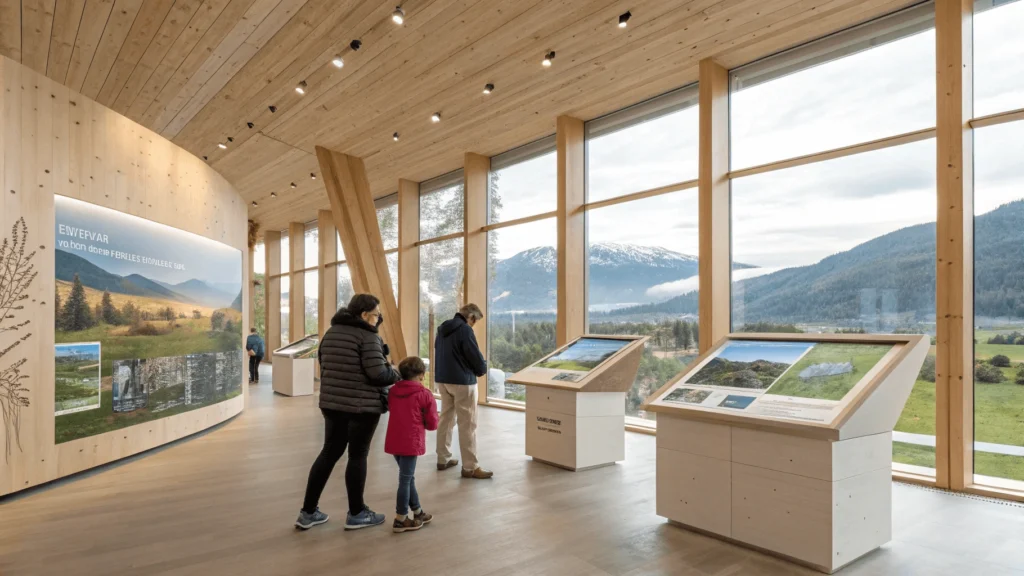
The UNESCO Biosphere Center in Schüpfheim serves as the main information hub for the region. Interactive exhibitions explain the uniqueness of the biosphere’s ecosystems and cultural heritage. Expert staff can help plan your visit, recommend trails suitable for your abilities, and provide current information about conditions and events.
Additional information points are located in:
- Sörenberg Tourism Office
- Flühli Village Center
- Entlebuch Railway Station
- Marbach Village Hall
For the most up-to-date information and event calendars, visit the official biosphere website at .
Accommodation Overview
The UNESCO Biosphäre Entlebuch offers diverse accommodation options that reflect its commitment to sustainable tourism:
Mountain Hotels
Traditional mountain hotels combine comfort with authentic alpine atmosphere. Many have been family-operated for generations and offer excellent regional cuisine featuring local products. Notable options include:
- Hotel Kemmeriboden-Bad near Schangnau
- Hotel Kurhaus in Sörenberg
- Hotel Drei Könige in Entlebuch
Farm Stays
Experience life on a working Swiss farm with these immersive accommodation options:
- Several farms offer “sleep in the straw” experiences, where guests can spend the night in clean, comfortable hay lofts
- Farm B&Bs provide comfortable rooms in traditional farmhouses, often with home-cooked meals featuring farm-fresh ingredients
- Some agricultural operations offer self-catering apartments in converted farm buildings
Alpine Huts
For those seeking to immerse themselves in nature, alpine huts provide rustic accommodation in spectacular settings:
- The Swiss Alpine Club operates several mountain huts accessible by hiking trails
- Many working alpine pasture farms offer basic overnight accommodation during summer months
Eco-Friendly Options
In keeping with the biosphere’s sustainability focus, several accommodations have implemented exceptional environmental practices:
- Hotel Rischli in Sörenberg operates with renewable energy and serves locally sourced organic food
- Berggasthaus Salwideli uses innovative water and energy conservation systems
- Several properties have been awarded the Swiss Sustainable Tourism certification
Camping
For those who prefer to sleep under the stars:
- Camping Entlebuch offers pitches for tents and campers in a scenic riverside location
- Several farms allow camping on their land with basic facilities
Sustainability & Conservation
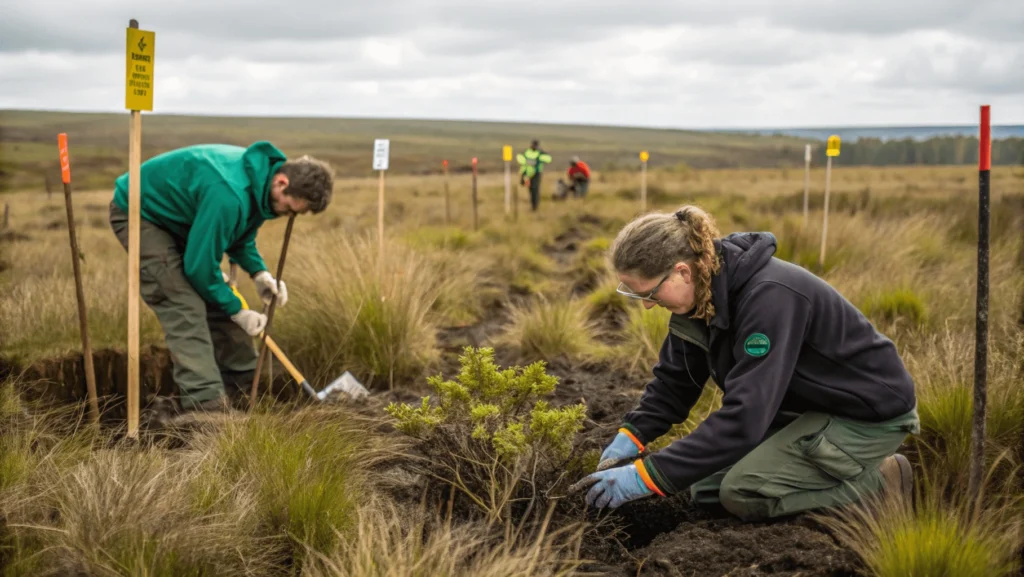
The UNESCO Biosphäre Entlebuch embodies a forward-thinking approach to conservation that recognizes humans as part of the ecosystem rather than separate from it.
Conservation Initiatives
The biosphere employs a collaborative approach to protecting its natural heritage:
- Moorland Restoration Projects work to rehabilitate damaged peatlands, which are crucial carbon sinks
- Biodiversity Monitoring Programs track the health of plant and animal populations throughout the region
- Sustainable Forestry Practices ensure that timber harvesting supports rather than damages forest ecosystems
- Traditional Agriculture Support helps local farmers maintain practices that preserve biodiversity and cultural landscapes
Visitor Responsibility
As a visitor to the biosphere, you play an important role in its conservation:
- Stay on marked trails to avoid damaging sensitive vegetation, especially in moorland areas
- Leave no trace by taking all waste with you and respecting the natural environment
- Support local businesses that prioritize sustainability and local sourcing
- Use public transportation whenever possible to reduce your carbon footprint
- Respect wildlife by observing from a distance and not disturbing animals
- Learn about the region’s ecology to develop a deeper appreciation for its conservation needs
Research and Education
The biosphere serves as a living laboratory for scientific research and environmental education:
- School Programs bring students from across Switzerland to learn about ecology and sustainability
- Scientific Research Projects study everything from climate change impacts to traditional ecological knowledge
- Community Education Initiatives help local residents understand and protect their natural heritage
Why Visit?
The UNESCO Biosphäre Entlebuch offers a unique combination of experiences that set it apart from other destinations:
- Authentic Swiss Experience: Away from the tourist crowds of more famous Swiss destinations, Entlebuch offers genuine interactions with local culture and traditions.
- Ecological Significance: The moorlands represent some of Europe’s most important wetland ecosystems, providing habitat for specialized species found nowhere else.
- Sustainable Tourism Model: Your visit contributes to a pioneering approach to conservation that balances ecological protection with community development.
- Diverse Activities: Whether you seek adventure, relaxation, cultural immersion, or natural discovery, the biosphere offers activities for every interest and ability level.
- Accessibility: Despite its pristine natural landscapes, the region is easily accessible from major Swiss cities via excellent public transportation.
- Educational Value: Interactive exhibits, guided tours, and interpretive trails provide insights into ecology, sustainable development, and traditional knowledge.
- Seasonal Beauty: Each season brings distinct experiences, from spring wildflowers to winter wonderlands, making the biosphere worth visiting year-round.
Frequently Asked Questions
What does UNESCO Biosphere Reserve mean?
A UNESCO Biosphere Reserve is an internationally recognized area where conservation is balanced with sustainable use. Unlike strictly protected national parks, biosphere reserves include human settlements and economic activities that are compatible with ecological protection.
Is entrance to the UNESCO Biosphäre Entlebuch free?
Yes, there is no general entrance fee to the biosphere. It’s an open region encompassing multiple municipalities. However, specific attractions, museums, or guided experiences within the biosphere may have their own fees.
Can I swim in the lakes and rivers?
Swimming is possible in some designated areas, but many of the moorland pools and lakes are protected habitats where swimming is not permitted. Always look for official swimming spots and respect local regulations.
How much time should I plan for visiting?
While day trips from Lucerne are possible, to truly experience the biosphere’s diversity, plan to stay at least 2-3 days. A week would allow you to explore different regions and engage in a variety of activities.
Are there guided tours available?
Yes, the Biosphere Center in Schüpfheim offers regular guided excursions led by certified nature guides who provide expert insights into the region’s ecology and culture. These range from short moorland walks to full-day thematic explorations.
Is the UNESCO Biosphäre Entlebuch suitable for families with children?
Absolutely! Many trails and attractions are designed with families in mind. The Mooraculum in Sörenberg is particularly popular with children, offering interactive play stations that teach about moorland ecology through fun activities.
What should I pack for a visit?
Even in summer, mountain weather can change quickly. Bring layers, rain protection, sturdy footwear, sun protection, and enough water. If exploring moorlands, insect repellent is recommended during warmer months.
Can I bring my dog?
Dogs are welcome in most areas but must be kept on a leash to protect wildlife and livestock. Some nature reserves have specific restrictions, so check local regulations.
Are there options for people with limited mobility?
Several wheelchair-accessible trails have been developed, including sections of moorland boardwalks. The Biosphere Center and major visitor facilities are accessible. Contact the information center for specific accessibility information for your planned activities.
How can I contribute to conservation efforts in the biosphere?
You can support local conservation by staying in eco-certified accommodations, purchasing regional products, using public transportation, and participating in volunteer programs organized by the biosphere management.
The UNESCO Biosphäre Entlebuch represents a Swiss natural treasure that remains off the radar for many international visitors. Its unique combination of pristine moorlands, rugged karst landscapes, and living cultural traditions offers an authentic Swiss experience that goes beyond the typical postcard views. By visiting this remarkable region, you not only treat yourself to unforgettable natural beauty but also support a pioneering model of sustainable development that balances human needs with ecological conservation. Whether you come for adventure, relaxation, or discovery, the Entlebuch Biosphere welcomes you to experience the harmony between nature and culture in the heart of Switzerland.

